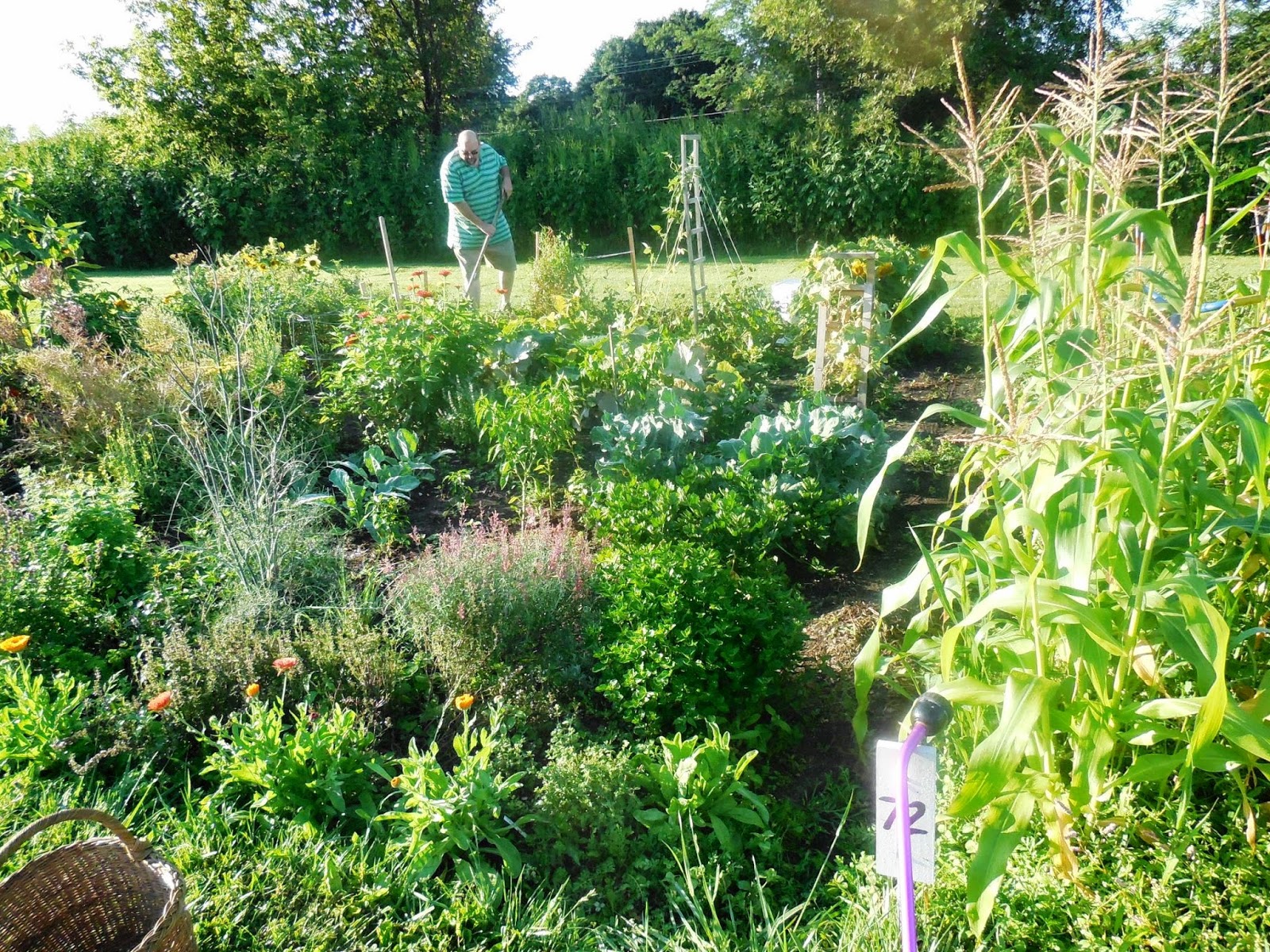Zucchini is prolific in a garden even if you only have three plants like I do. We grew ours from seed. Placed thee seeds in a hill and thinned them to one plant in each hill. However, they still grew large and spread into the path and are covered with blossoms and fruits. We have about 5 so far and I am looking forward to using them. I will share recipes and experiments as time goes on.
How you use your zucchini sometimes requires different treatment and I thought I would start with how to cut your zucchini first, then move into recipes later.
The first technique is to dice the zucchini
If you are going to make soups or stews this is the perfect bite size.
Shredding your zucchini with a box grater or food processor
 This technique creates threads you can use in slaws, lasagna, omelets,
This technique creates threads you can use in slaws, lasagna, omelets,
add to ground meat in your meatloaf, or to make breads. If you want to make sure your finished product is not water, sprinkle the zucchini with
salt to draw out the excess moisture then rinse and pat dry before
adding to slaws and other similar dishes.
You can slice your zucchini crosswize to create disks.
These shapes are great in stir fry, casseroles, any scalloped dish, or a meat and veggie saute. You can also slice on the diagonal to get a more oval shape.This is the shape I use for my Zucchini sweet pickles, but I cut them rather thin.
If you want to grill, cut 1/2 inch thick planks.
This is a great way to use the really large zucchini you get later in the season.
Sticks of zucchini
These 1/2 inch by 3/4 inch sticks or spears are great if you are making pickles, or veggie fries. This is also a sturdy shape for deep frying.
If you have a mandoline you can cut your zucchini in Julienne strips.
This is great in salads raw or steamed and used in or as a side dish. This is also a great way to reduce the tough tooth feel of an older more mature zucchini so you can use it in a stir fry or saute.
A potato peeler can let you shave off ribbons of zucchini.
This will help avoid the seedy center in larger fruits. You can then take these thin pieces and marinade them in lemon juice and olive oil to make a vegetarian carpaccio or steam them to craft a zucchini fettuccine.
Carpaccio is a rare beef dish that uses thin slices of meat served over arugula and spinach with shaved parmesean cheese. You can simply substitute the the zucchini for the beef and drizzle lemon juice and olive oil over it all and sprinkle with fresh pepper and serve. Or you can use your favorite vinaigrette.
How you use your zucchini sometimes requires different treatment and I thought I would start with how to cut your zucchini first, then move into recipes later.
The first technique is to dice the zucchini
If you are going to make soups or stews this is the perfect bite size.
Shredding your zucchini with a box grater or food processor
 This technique creates threads you can use in slaws, lasagna, omelets,
This technique creates threads you can use in slaws, lasagna, omelets,add to ground meat in your meatloaf, or to make breads. If you want to make sure your finished product is not water, sprinkle the zucchini with
salt to draw out the excess moisture then rinse and pat dry before
adding to slaws and other similar dishes.
You can slice your zucchini crosswize to create disks.
These shapes are great in stir fry, casseroles, any scalloped dish, or a meat and veggie saute. You can also slice on the diagonal to get a more oval shape.This is the shape I use for my Zucchini sweet pickles, but I cut them rather thin.
If you want to grill, cut 1/2 inch thick planks.
This is a great way to use the really large zucchini you get later in the season.
Sticks of zucchini
These 1/2 inch by 3/4 inch sticks or spears are great if you are making pickles, or veggie fries. This is also a sturdy shape for deep frying.
If you have a mandoline you can cut your zucchini in Julienne strips.
This is great in salads raw or steamed and used in or as a side dish. This is also a great way to reduce the tough tooth feel of an older more mature zucchini so you can use it in a stir fry or saute.
A potato peeler can let you shave off ribbons of zucchini.
This will help avoid the seedy center in larger fruits. You can then take these thin pieces and marinade them in lemon juice and olive oil to make a vegetarian carpaccio or steam them to craft a zucchini fettuccine.
Carpaccio is a rare beef dish that uses thin slices of meat served over arugula and spinach with shaved parmesean cheese. You can simply substitute the the zucchini for the beef and drizzle lemon juice and olive oil over it all and sprinkle with fresh pepper and serve. Or you can use your favorite vinaigrette.








.jpg)
.JPG)
.jpg)

.jpg)
.jpg)

.JPG)
.JPG)
.JPG)
.JPG)
.JPG)
.JPG)
.JPG)
.JPG)

.JPG)
.JPG)
.JPG)
.JPG)
.JPG)



.JPG)
%2Btomatoes.jpg)
%2Bsunflowers.jpg)
%2Bcherry%2Btom.jpg)

%2Bplain%2Bbasket.jpg)
%2Blabeled%2Bbasket.jpg)
%2Bhangers.jpg)
%2Bdried%2Bmint.jpg)
%2Bsavory.JPG)
%2Bdried%2Bsavory.jpg)
%2Bcrumbled%2Bsavory.jpg)
.JPG)

.JPG)


+verticillium+wilt.JPG)


.jpg)